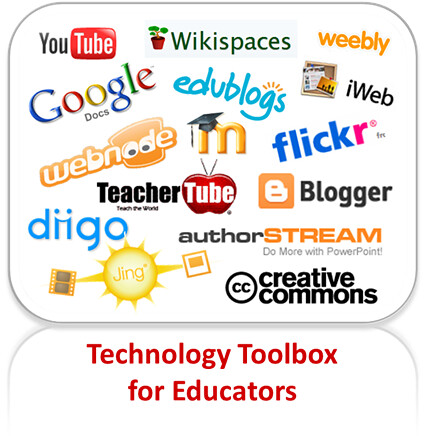In Chapter 1 of our text book, Transforming Learning with
New Technologies, there were three concepts that really stood out to me. The
first concept was technology-based text book. This concept allows teachers to
build their own lessons using different forms of technology. I think that this
is a great idea and will allow me as a teacher to build unique lessons that
cater to a variety of students and their different learning speeds. This will
also allow me to make lessons interactive and fun for the students. As a
teacher it might also allow me to find out what isn't working for the student
and because the lessons are technology based I can change the lessons up to
better serve the students.
The second concept, Web 2.0 Tools, was more of a helpful
tool that can be put into practice to help teachers integrate technology into their
lessons. I am the kind of person that uses the minimum amount of technology
possible. Yes, I can use a computer and I am attached to my kindle and but even
though I have a smart phone I mostly use it just to make phone calls. I do have
a Facebook page but I probably check it twice a year. I didn't realize that
being a teacher would require the use of so much technology (not that it’s a
bad thing). Chapter 1 really gets into the kinds of technology teachers can use
and Web 2.0 Tools really fascinated me. I
Googled Web 2.0 Tools to find out more about it and found Discovery EducationWeb2014: Web 2.0 Tools. This site allows teachers to learn how to use all kinds
of technology to help students on their learning journey. While I was on the
site I found a YouTube video that went over some websites that can allow
teachers to let student use their phones to do in class surveys and more. I
posted the video below because I think it can be very useful information for
any teacher (or future teacher) to have.
The third concept that interested me was Digital Identity. This
concept is explained as a teachers “technology talents and competencies” (Maloy,
et al, 2013, p. 15). The book goes on to explain how important it is for a teacher
to not only put technology to use in the classroom but also keep up to date
with it at all times. Technology is something that is forever changing and
evolving. I can see how helpful this concept can be. It can allow teachers,
students, and a parent to know what is going on at all times. As a teacher
technology can allow you to keep up with curriculum, updated technology, student’s
progress, social media, blogs, and many more things. As a teacher your digital
identity is how you put all these technologies to work and how well, and often,
you use them.
In conclusion, Chapter 1 in our text book, Transforming
Learning with New Technologies, was very enlightening for me and made me reflect
on several concepts that are very interesting. I learned that technology is
going to play a big part of my role as a teacher. It is going to allow me to
better serve my students with tools such as Web 2.0 and the ability to create
my own text book with technology-based text books. I also now know that as I learn these new
technologies and put them to use it will create my digital identity.
 |
| Photo credit to jennip98 on Flickr |
Resources
Discovery Education Web2014 : Home. (2015).
Retrieved January 17, 2015, from http://web2014.discoveryeducation.com/
Maloy, R., O'Loughlin, R., Edwards, S., & Woolf, B.
(2013). Transforming Learning with New Technologies. 2nd Edition. Boston,
MA: Pearson Education Inc.
Web 2.0. (2010, January 6). Retrieved January 17, 2015, from
https://www.youtube.com/watch?list=PLEEA14E12B59B9EF5&v=SmJe-cfESuk&feature=player_embedded
Fantastic blog post! :) You captured the essence of your selected three concepts not only with your reflections, but also in hyperlinks (which, by the way, strongly recommend that you continue to connect with Discovery Education as they have a very strong teacher network), photo (Creative Commons licensed and very relevant - terrific!) and video. All of those multimedia elements really add to the interactivity as well as brain-based neuron connections to keep the reader engaged and interested.
ReplyDeleteIt appears that this chapter was a bit eye-opening for you. Technology can play a huge role in our educational institutions as it really can help transform learning, but it truly isn't the 'driver' - instead, it becomes the 'enhancer'...but often a necessary one if we intend to engage our students and prepare them for the 21st century in which we live. :)